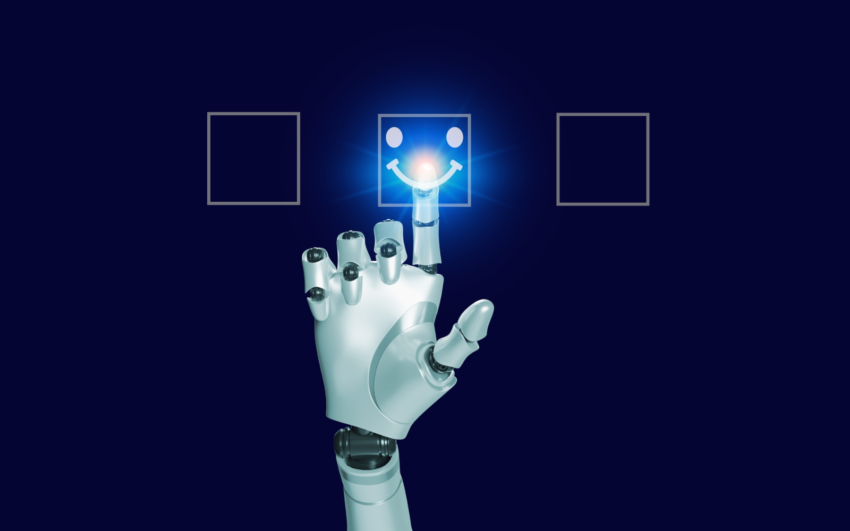Gone are the times when AI was merely a distant idea.
Immediately, AI has already been built-in into our each day lives via varied purposes and providers, remodeling how we work together with digital platforms.
A number of years in the past, AI operated silently behind the scenes, facilitating knowledge processing and optimization for giant providers.
Nevertheless, beginning in 2023, its presence has turn out to be ubiquitous, manifesting within the options and functionalities of the apps and instruments we use often.
How AI Is Reshaping Our Digital Expertise
From iOS 16 Live Text Translation to Gmail Auto-complete, AI has turn out to be integral to our digital experiences.
What’s significantly fascinating is the daring strides made within the integration of AI into the very instruments we use to create and work.
Take into account the emergence of AI-powered image creation tools that generate visuals from textual descriptions or rework sketches into intricate 3D fashions in actual time.
Video creation, as soon as labor-intensive, is now extra accessible and artistic, because of AI-driven algorithms that deal with background/object detection and stylization.
My background in design has compelled me to discover how these developments will reshape our interactions with units and software program.
We’re witnessing a shift from the normal keyboard and mouse interplay in direction of extra pure types of communication with AI-integrated tools.
This transition from guide inputs to intuitive conversations and descriptions empowers customers to turn out to be orchestrators of technological capabilities.
Does AI Improve Or Compromise The Authenticity Of Consumer Interactions?
The continuing discourse surrounding AI’s position in UX design facilities on whether or not it enhances or compromises the authenticity of person interactions.
Advocates view AI as a transformative drive, empowering designers to personalize experiences, predict person conduct, and streamline processes.
But, skeptics elevate issues concerning the potential erosion of real human interplay, urging warning in opposition to the over-reliance on algorithmic intervention.
The speedy tempo of AI innovation necessitates a fragile stability between harnessing its potential and preserving authenticity.
Whereas AI presents unprecedented alternatives, its integration poses moral dilemmas and challenges UX professionals to navigate complicated terrain.
The necessity for accountable AI adoption underscores the significance of prioritizing user-centric design principles, sustaining transparency, and fostering open dialogue.
As we embrace AI as a device for innovation, collaboration, and empowerment, we should ensure that it complements – not replaces – human expertise.
In the end, the way forward for UX lies in hanging a balanced strategy: leveraging AI’s capabilities whereas preserving the authenticity of person interactions. We should forge a path the place expertise enhances – somewhat than compromises – the human expertise.
Increasing AI Purposes And Their Affect On Consumer Expertise
AI is reshaping our interactions with cameras, transcending their conventional position as image-capturing units.
Outfitted with AI algorithms, cameras prolong past mere pictures to acknowledge QR codes, translate texts, and facilitate visible searches. This evolution transforms the digicam right into a dynamic enter device, successfully bridging the bodily and digital realms.
Take into account the Dot-go app, which leverages smartphone cameras to provoke automation processes.
Initially designed to help visually impaired people, this modern software demonstrates the broader potential of AI-powered cameras to boost each day experiences for everybody.
From figuring out bus routes to calculating calorie consumption, AI-powered digicam purposes provide boundless prospects for seamless integration into on a regular basis life.
As AI progresses, it can additional enrich person experiences via pure interactions corresponding to facial recognition and gesture management. This highlights the significance of hanging a stability between automation and human contact.
A Firsthand Look At How AI Empowers Builders
GitHub Copilot exemplifies the fusion of AI and developer collaboration, transcending its position as a mere device to turn out to be a gathering level between builders and AI. (Disclaimer: I labored for GitHub.)
GitHub’s machine studying specialists devoted themselves to enhancing Copilot’s contextual understanding, recognizing efficient communication because the linchpin of seamless collaboration.
Throughout my time as GitHub’s website positioning supervisor, I witnessed firsthand the outstanding fusion of AI and developer collaboration throughout the growth section of Copilot.
Greater than only a device, Copilot represents a convergence of minds between builders and their AI pair programming counterparts.
Machine studying specialists from GitHub tirelessly researched, developed, and examined new capabilities to boost Copilot’s contextual understanding.
They acknowledged that efficient communication is important to pair programming, emphasizing the importance of inferring context to facilitate seamless collaboration.
As a advertising and marketing staff member, I performed a pivotal position in guaranteeing full visibility from search to all communications surrounding the mission. It was a mission that genuinely excited me.
The evolution of Copilot from its inception to its widespread availability represented a paradigm shift in AI-driven coding instruments. Leveraging OpenAI’s Codex mannequin, GitHub Copilot emerged because the world’s first generative AI coding device at scale.
The journey wasn’t nearly creating a device; it aimed to empower builders to deal with significant work.
By means of meticulous experimentation and iteration, GitHub’s staff honed Copilot right into a useful resource that accelerates duties like code completion and fosters creativity and effectivity.
The collaborative efforts behind Copilot underscored the importance of excellent person expertise and the seamless integration of AI applied sciences into the developer workflow.
Because of this, Copilot continues to revolutionize the way in which builders work, providing tailor-made strategies and insights that amplify productiveness and innovation in coding endeavors.
Optimizing The Consumer Journey With Human-AI Collaboration
AI is a pivotal catalyst for personalization, clever automation, and predictive analytics in UX design.
By analyzing person knowledge and conduct, AI empowers designers to create bespoke experiences that deeply resonate with particular person preferences.
This AI-driven strategy fosters engagement, effectivity, and data-driven decision-making, resulting in vital improvements in SEO rankings.
Websites prioritizing UX elements tend to rank higher on search engine outcomes pages (SERPs) on account of decreased bounce charges, elevated dwell time, and enhanced user-interaction metrics.
Thus, integrating AI-driven UX design not solely optimizes person satisfaction, but additionally boosts a web site’s visibility and authority within the aggressive digital panorama.
Nevertheless, as with all technological development, moral issues loom massive.
Designers should navigate knowledge privateness, bias, and transparency points to make sure AI algorithms uphold ethical requirements and reduce unfavourable impacts on customers.
Key Takeaway
AI’s transformative influence on person expertise design is simple.
By embracing AI’s capabilities and collaborating with expert specialists, designers can harness its potential to ship distinctive experiences that meet or exceed person expectations within the digital period.
As we proceed to innovate and adapt, the synergy between human creativity and AI expertise will profoundly form the way forward for interplay design.
Extra sources:
Featured Picture: APHITHANA/Shutterstock

